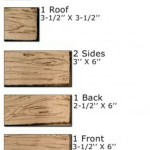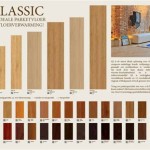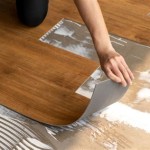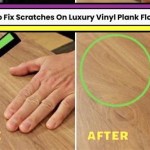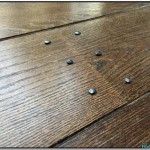Can an Oscillating Tool Cut Laminate Flooring?
The question of whether an oscillating tool can effectively cut laminate flooring is a common one among both seasoned professionals and DIY enthusiasts. Laminate flooring, known for its durability and aesthetic appeal, requires precise cutting for installation and repairs. While various tools exist for this purpose, the oscillating tool has emerged as a versatile option, offering unique advantages in certain situations. This article will delve into the suitability of oscillating tools for cutting laminate flooring, exploring their strengths, limitations, and the best practices for achieving clean and accurate cuts.
Understanding the composition of laminate flooring is crucial to determining the appropriate cutting tools. Laminate flooring typically consists of multiple layers: a wear layer (the top surface providing resistance to scratches and impacts), a decorative layer (a photographic image that mimics wood, stone, or tile), a core layer (usually made of high-density fiberboard or HDF, providing stability and impact resistance), and a balancing layer (the bottom layer, providing stability and moisture resistance). The HDF core, in particular, can be quite dense and require sharp, effective cutting tools for a clean, chip-free finish.
Various tools are commonly used for cutting laminate flooring, including circular saws, table saws, miter saws, jigsaws, and laminate cutters. Each tool has its own set of advantages and disadvantages regarding speed, precision, portability, and ease of use. An oscillating tool enters this landscape as a more specialized option, excelling in situations where other tools might be less practical or convenient.
The Advantages of Using an Oscillating Tool for Laminate Flooring
Oscillating tools, also known as multi-tools, operate using rapid oscillations rather than rotary motion. This unique action, combined with a variety of interchangeable blades, makes them adept at cutting through a wide range of materials, including laminate flooring. Several key advantages make oscillating tools a viable choice for this task.
One of the primary benefits is their ability to perform plunge cuts. This means the blade can be inserted directly into the material without needing to start from an edge. This is incredibly useful for making cutouts around pipes, door frames, or other obstacles in the middle of a laminate floor. A circular saw or jigsaw, for example, would require starting from an edge and potentially damaging the surrounding flooring to reach the desired cutout area.
Another advantage is their compact size and maneuverability. Oscillating tools can easily fit into tight spaces where larger saws would be impractical. This is particularly helpful when working in small rooms, corners, or under cabinets. The ability to adjust the angle of the blade further enhances their versatility in confined spaces.
Furthermore, oscillating tools tend to produce less dust and noise compared to circular saws or jigsaws. This can be a significant benefit when working indoors, especially in occupied homes or apartments. While dust collection is still recommended, the reduced volume of airborne particles contributes to a cleaner and more comfortable working environment.
Finally, oscillating tools offer considerable control. The user can carefully guide the blade along the cutting line, making precise adjustments as needed. This level of control is especially valuable when working with intricate patterns or delicate trim pieces. The oscillating action reduces the risk of kickback, making them generally safer to use than some other power saws.
Limitations and Considerations When Using Oscillating Tools
While oscillating tools offer several advantages, they also have limitations that must be considered before choosing them for cutting laminate flooring. Understanding these limitations is essential for achieving optimal results and avoiding potential problems.
One of the main limitations is the cutting speed. Oscillating tools are generally slower than circular saws or miter saws, especially when cutting long, straight lines. While they excel at intricate cuts and tight spaces, they are not the most efficient choice for cutting large quantities of flooring. For extensive flooring projects, a combination of tools might be the most practical approach, using the oscillating tool for detailed work and a faster saw for the bulk of the cutting.
Another consideration is blade selection. Choosing the correct blade is crucial for achieving clean cuts and preventing damage to the laminate flooring. Blades specifically designed for wood or multi-material cutting are generally suitable, but it is important to select a blade with fine teeth to minimize chipping. A bi-metal blade with hardened teeth will hold up longer and provide cleaner cuts than a standard carbon steel blade. Experimenting with different blade types on a scrap piece of laminate is recommended to determine the best option for a particular flooring material.
Blade wear is also a factor to consider. The oscillating action can generate heat and friction, which can quickly dull the blade, especially when cutting through dense HDF. Regular blade changes are necessary to maintain cutting efficiency and prevent tear-out. Keeping a supply of sharp blades on hand is essential for larger projects. Using a lubricant or coolant can also help reduce friction and extend blade life.
Finally, the oscillating tool requires a stable hand and controlled pressure. Applying too much pressure can cause the blade to bind or overheat, while insufficient pressure can result in splintering or uneven cuts. Practice on scrap material is recommended to develop the necessary technique. Securing the laminate flooring with clamps or a workbench can also help improve stability and control during cutting.
Best Practices for Cutting Laminate Flooring with an Oscillating Tool
To maximize the effectiveness of an oscillating tool for cutting laminate flooring and to achieve clean, precise results, several best practices should be followed. These practices encompass preparation, technique, and safety considerations.
Prior to cutting, accurately mark the cutting lines on the laminate flooring using a sharp pencil or utility knife. Double-check measurements to ensure accuracy. Using a straightedge or T-square can help maintain straight lines. For complex shapes or patterns, consider creating a template to guide the cutting process.
Select the appropriate blade for the job. As mentioned earlier, a fine-toothed blade designed for wood or multi-material cutting is generally recommended. Ensure the blade is securely attached to the oscillating tool and that the tool is set to the appropriate speed. Higher speeds are often suitable for laminate flooring, but it is best to start with a lower speed and gradually increase it until optimal cutting performance is achieved.
When making the cut, hold the oscillating tool firmly with both hands and apply moderate, consistent pressure. Avoid forcing the blade through the material. Allow the oscillating action to do the work. Maintain a steady cutting speed and follow the marked cutting line carefully. If the blade starts to bind or overheat, reduce the pressure and check the blade for sharpness.
For plunge cuts, start by tilting the tool slightly and gradually lowering the blade into the material. Once the blade is fully inserted, level the tool and continue cutting along the marked line. When cutting around obstacles, take your time and make small, controlled cuts. Use the oscillating tool's maneuverability to navigate tight corners and intricate shapes.
To minimize chipping, consider using painter's tape along the cutting line. The tape helps to support the laminate surface and prevent splintering. Scoring the cutting line with a utility knife before using the oscillating tool can also help create a cleaner edge.
Always wear appropriate safety gear, including eye protection, hearing protection, and a dust mask. Laminate flooring can produce fine dust particles that can be harmful to the respiratory system. Eye protection is essential to prevent debris from entering the eyes. Hearing protection is recommended to reduce noise exposure, especially during prolonged use. A well-ventilated workspace is also important to minimize dust inhalation.
Regularly inspect the blade for wear and replace it as needed. A dull blade can cause tear-out, increase cutting time, and put unnecessary strain on the oscillating tool. Keep the tool clean and free of debris to ensure optimal performance. Follow the manufacturer's instructions for maintenance and lubrication.
By adhering to these best practices, users can effectively utilize oscillating tools for cutting laminate flooring, achieving clean, accurate cuts and professional-looking results. While not a replacement for all other cutting tools, the oscillating tool offers a valuable combination of versatility, precision, and maneuverability that makes it a worthwhile addition to any flooring installer's toolkit.

3 Best Tools For Cutting Laminate Vinyl Floor Cutter Jigsaw Small Saw Mryoucandoityourself

Lvp Flooring Installation Made Easy With This One Simple Trick

Laminate Flooring Trim With Multitool

5 Types Of Jobs A Multi Tool Makes Easier Extreme How To

Milwaee 35mm 1 3 8 Open Lok Japanese Tooth Hardwood Blade 49251131 Tool

Oscillating Tool For Laminate Flooring Variable Sd Door Jambs Nail Cutting

Oscillating Tool For Laminate Flooring Variable Sd Door Jambs Nail Cutting

Can You Cut Wood With An Oscillating Tool Wonderblade

Tool Lab How To Choose And Use Oscillating Multi Tools This Old House

Help And Advice
Related Posts


